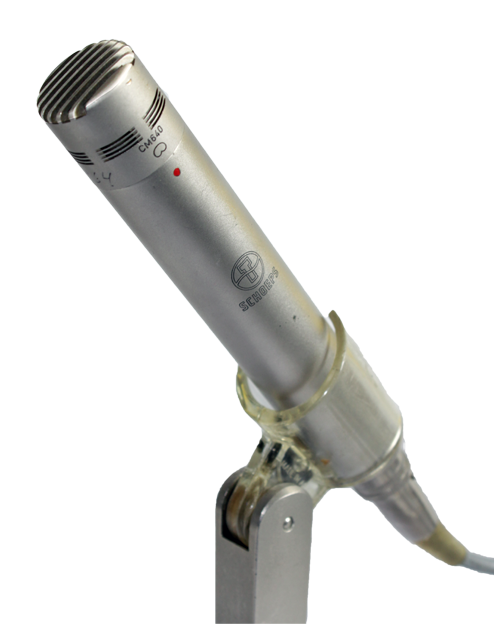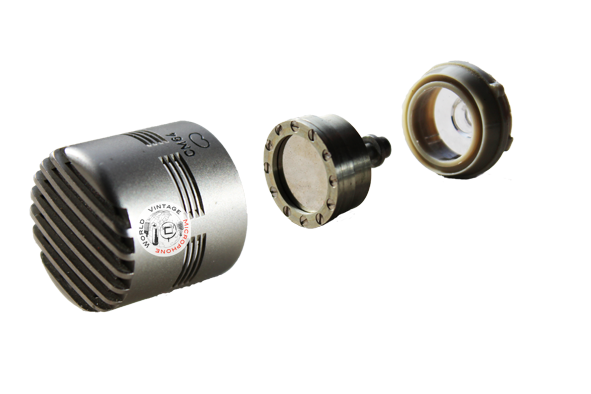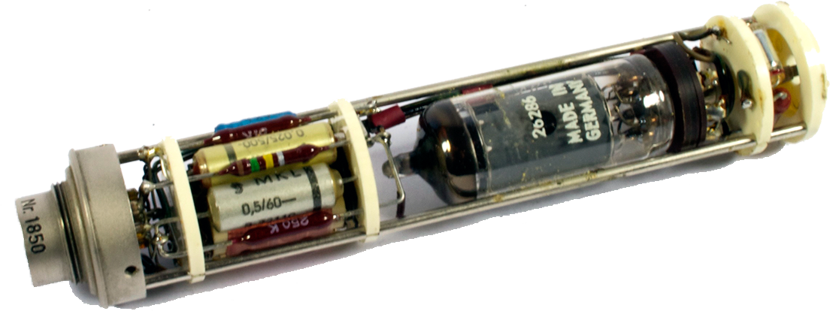|
The Schoeps CM 640 is the oddball amongst the Schoeps microphones. The brand has a reputation as great as Neumann, and is highly respected in the audio world, their microphones have a precise, neutral sound, often favoured for the recording of classical music.
Alas the CM 640 is like 'the last chicken in the shop'; a lot less interesting to many. The whole CM series suffers because of this, which is not rightfully so, in my opinion.
The CM 60 preamplifier, which could be used with a number of interchangeable capsules, was introduced in 1960, it was Schoeps' last tube microphone and was based on the EF 94 tube, previously used for other tube mics of the company. The diaphragms were nickel, like in earlier Schoeps models.
It succeeded the marvelous M 221, the first really small tube microphone, with a diameter of only 20mm, that was built around the famous Telefunken AC 701k tube.
The CM 60 microphones ( 25mm diameter, length 152mm, weight 148 gr) were named after the capsules: CM 63 - omnidirectional, CM 64 - standard cardioid, CM 640 - speech cardioid, CM 65 - with a switchable omni/cardioid pattern, CM 65 S - switchable omni/cardioid, with a capsule that could rotate and swivel, and the three pattern CM 66 (D), the D version had a switchable 15 dB pad. The EF94 tube was instead of soldered, sprung suspended and could be easily exchanged.
The microphones were sold by Schoeps and Telefunken. Strässer GMBH, a company from Stuttgart, Germany, sold lots of CM 640 speech cardioids, as part of their PA systems, that were mainly meant for churches.
Where other CMs were sold to studio's, where they remain to be used, the Strässer badged CM 640s floated the second hand market, from the Eighties on, especially in Germany.
For speech, the capsule was mounted stiffer than the regular CM 64, to create a bass roll-off below 200 Hz, and was less sensitive, for use under unfavourable conditions in reverberant spaces (like churches).
These factors limit the use of the 640s to close miking purposes, which does not mean they do not produce great sound. Other manufacturers also sell good sounding mics with a permanent bass cut, to counter the proximity effect: for instance the Neumann KMS 104 & 105 vocal microphones.
To complicate things further, Schoeps made the CM 60 preamps in two versions: with 200 Ohms output, marked on the casing with a blue dot, and a 50 Ohms version, marked with a red dot. The latter had an output which was 6 dB lower.
So you need either a good preamp or a Cloudlifter to bring the red dotted CM 640 up to level for modern recordings.
In 1965, Schoeps presented a transistorised version the CMT series, these were the first to use phantom power, the diaphragms were made from mylar, with improved reliability. The capsule types remained the same; CMT 52-omni, CMT 54 - cardioid, CMT 540 - speech cardioid, CMT 55 - switchable omni/cardioid, and CMT 56 omni/cardioid/figure-eight, with a single diaphtagm. Specifications were close to their current capsules. They were produced until the Eighties.
These and many more types feature in my book Witnesses of Words. More information about that can be found at www.witnessesofwords.com
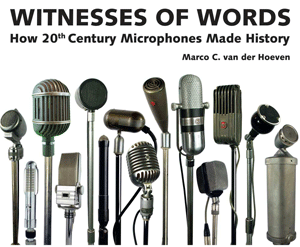
|
|
|
|
|
Top: The CM 640 & opened CM 64 capsule
Below: sound, the CM 60 pre amp, ad from 1961 and specs
|
|
|
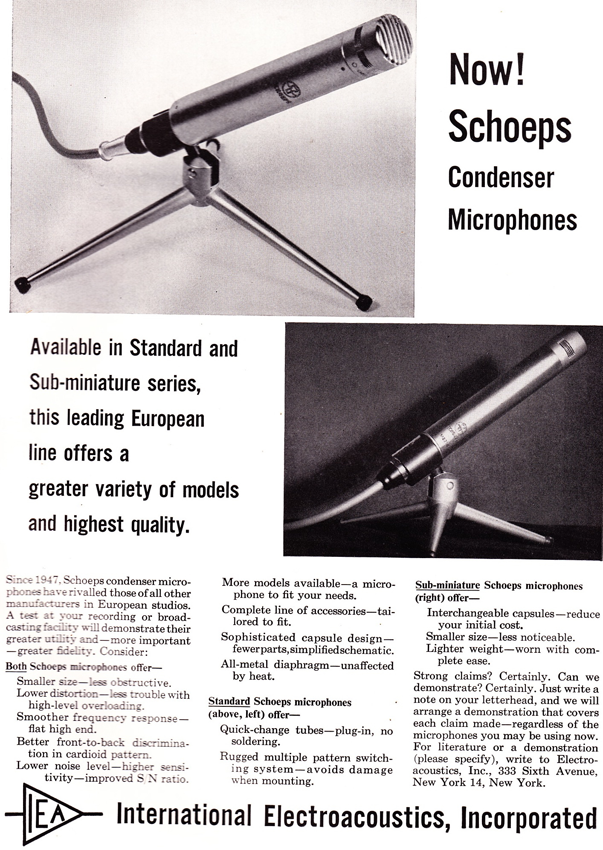 |
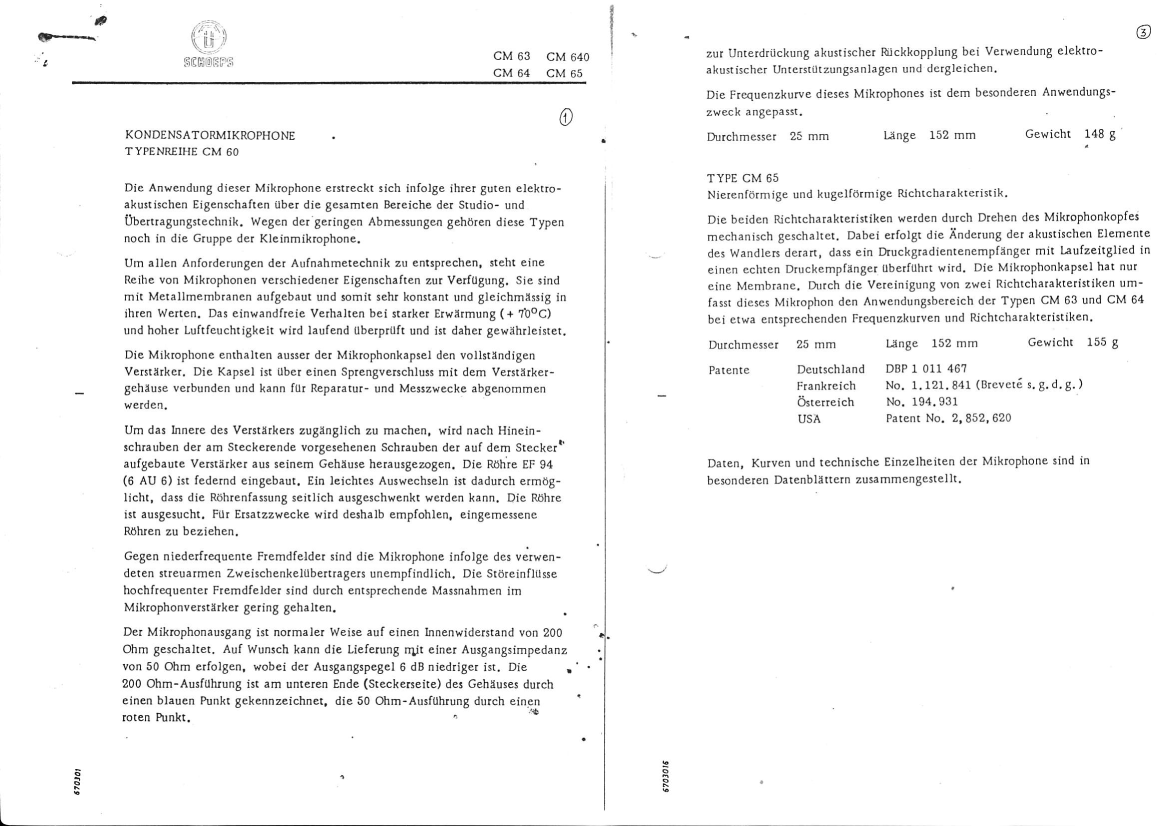 |
|


 Video's
Video's Contact
Contact


